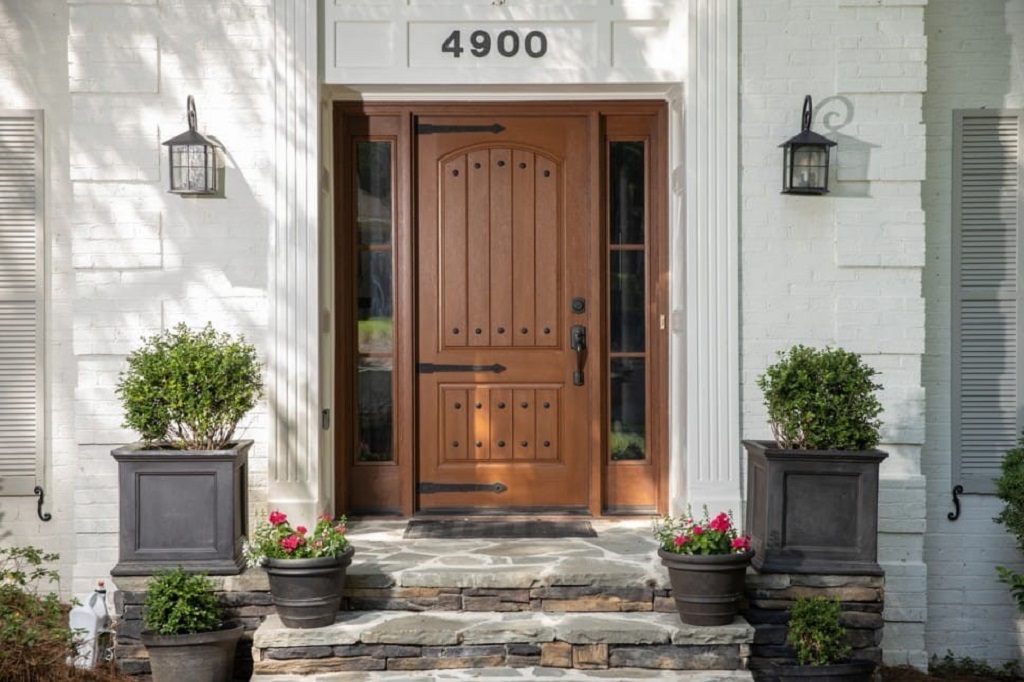When designing or renovating a home, understanding standard measurements like the typical door height is essential for both functionality and aesthetics. Doors play a critical role in defining a space, ensuring accessibility, and enhancing a home’s overall appeal. Whether you’re a homeowner, architect, or builder, knowing the standard door heights used in modern homes and buildings can streamline your planning process. For reliable insights into home design standards, websites like Decoracaos offer valuable resources to guide your decisions.
This article explores the typical door height for residential and commercial buildings, factors influencing variations, and considerations for specific needs like accessibility. With clear standards and practical tips, you’ll gain a solid understanding of what to expect and how to make informed choices for your project.
What Is the Typical Door Height in Modern Homes?
The typical door height in most modern homes in the United States is 80 inches, or 6 feet 8 inches. This standard applies to interior and exterior doors in residential settings. However, this measurement refers to the door slab itself, not the frame, which is slightly taller and wider to accommodate the door. For a comprehensive look at how door frames impact these measurements, Decoracaos provides a detailed guide that explains frame sizing in the U.S.
This 80-inch height has become the industry standard because it suits most people’s needs, providing enough clearance for comfortable passage while maintaining cost-effective production. Manufacturers and builders widely adopt this dimension to ensure consistency across homes, making it easier to source doors and hardware.
Why Is 80 Inches the Standard Door Height?
The 80-inch door height became standard due to a balance of practicality, ergonomics, and cost. Here are some reasons this dimension is widely used:
- Human Ergonomics: The average height of adults in the U.S. ranges from 5 feet 4 inches to 5 feet 10 inches, according to the Centers for Disease Control and Prevention. An 80-inch door provides ample clearance for most people, including taller individuals, without requiring excessive material.
- Construction Efficiency: Standardizing door heights simplifies manufacturing, installation, and inventory management for builders and suppliers.
- Aesthetic Proportions: An 80-inch door complements typical ceiling heights of 8 to 9 feet in modern homes, creating a balanced and visually appealing look.
While 80 inches is the norm, variations exist depending on the building type, architectural style, or specific accessibility requirements.
Variations in Door Heights Across Building Types

While the typical door height is 80 inches in most homes, other building types or design preferences may call for different measurements. Let’s explore some common variations.
Commercial Buildings
In commercial settings, door heights often exceed the residential standard. Many commercial doors measure 84 inches (7 feet) or taller to accommodate larger crowds, heavier traffic, and accessibility needs. For instance, office buildings or retail spaces may use taller doors to create a more open and welcoming atmosphere. Additionally, fire codes and accessibility regulations, such as those outlined in the Americans with Disabilities Act (ADA), may influence door dimensions in public spaces.
Custom and Luxury Homes
In luxury homes or custom builds, door heights can reach 96 inches (8 feet) or more. Taller doors create a grand, elegant appearance, especially in homes with high ceilings (10 feet or above). However, these doors are more expensive due to increased material costs and custom manufacturing. Architects often choose taller doors to make a bold design statement or to align with unique aesthetic goals.
Older Homes
Homes built before the mid-20th century may have non-standard door heights. For example, Victorian-era homes often feature doors as short as 76 inches or as tall as 90 inches, depending on the architectural style. If you’re renovating an older property, you may need custom doors to match existing frames or to maintain historical authenticity.
Factors Influencing Door Height Choices
Several factors can influence the choice of door height for a project. Understanding these can help you decide whether to stick with the typical door height or opt for a custom size.
Ceiling Height
The height of a room’s ceiling plays a significant role in determining door height. In homes with standard 8-foot ceilings, an 80-inch door fits well proportionally. However, in spaces with 10-foot or higher ceilings, taller doors (e.g., 84 or 96 inches) may look more balanced and enhance the room’s spaciousness.
Accessibility Requirements
The ADA sets guidelines for doorways in public and commercial buildings to ensure accessibility for individuals with disabilities. While residential homes aren’t subject to these regulations, many homeowners choose ADA-compliant doors (at least 80 inches tall and 36 inches wide) to accommodate wheelchairs or future mobility needs.
Architectural Style
Different architectural styles call for varying door heights. For example, modern minimalist designs often favor taller doors for a sleek, open look, while traditional homes may stick to the standard 80-inch height for a classic appearance. Additionally, cultural preferences can influence door height. In some European countries, doors as tall as 90 inches are common in residential settings.
Budget Constraints
Custom door heights, such as 8-foot or taller doors, come with higher costs for materials, manufacturing, and installation. If budget is a concern, sticking with the typical 80-inch height is often the most cost-effective option.
Practical Considerations for Choosing Door Heights
When planning a home or building project, consider the following practical tips to ensure the door height meets your needs:
- Measure Existing Frames: If you’re replacing doors, measure the existing door frames to ensure compatibility. Standard frames are designed for 80-inch doors, but older homes may require custom sizes.
- Account for Flooring: Flooring materials, such as thick carpets or tiles, can reduce clearance under the door. Ensure the door height accounts for these additions to avoid scraping or sticking.
- Consider Hardware: Door handles, hinges, and locks are typically designed for standard 80-inch doors. Custom heights may require specialized hardware, increasing costs.
- Plan for Future Needs: If you anticipate accessibility needs, such as accommodating wheelchairs, opt for doors that meet or exceed ADA guidelines.
By considering these factors, you can choose a door height that balances functionality, aesthetics, and budget.
How Door Height Impacts Energy Efficiency
Door height can also affect a home’s energy efficiency. Taller doors may have larger gaps around the frame, potentially leading to drafts or heat loss. To mitigate this, ensure proper weatherstripping and insulation around the door frame. According to the U.S. Department of Energy, well-sealed doors can reduce energy costs by preventing air leaks. For exterior doors, choosing energy-efficient materials like fiberglass or steel can further enhance performance, regardless of height.
Read More Also: Water Heater Too Hot on Lowest Setting: Causes, Fixes, and Safety Tips
FAQs About Typical Door Heights
What is the standard door height for a residential home?
The typical door height in U.S. residential homes is 80 inches (6 feet 8 inches) for both interior and exterior doors.
Are commercial door heights different from residential ones?
Yes, commercial doors are often taller, typically 84 inches (7 feet) or more, to accommodate higher traffic and accessibility needs.
Can I install taller doors in a standard home?
Yes, taller doors (e.g., 8 feet) can be installed, but they may require custom frames, hardware, and higher costs.
Do older homes have different door heights?
Older homes, especially those built before the 1950s, may have non-standard door heights, ranging from 76 to 90 inches.
How does door height affect accessibility?
Taller and wider doors (at least 80 inches high and 36 inches wide) improve accessibility for wheelchairs and mobility aids.
Read More Also: From Drab to Fab: Transforming Your Kitchen Space with Stylish Decor
Conclusion
Understanding the typical door height of 80 inches for modern homes provides a solid foundation for planning construction or renovation projects. While this standard suits most residential needs, variations exist in commercial buildings, luxury homes, and older properties. Factors like ceiling height, accessibility requirements, and architectural style can influence your choice of door height. By considering practical aspects like budget, energy efficiency, and hardware compatibility, you can select the right door height for your space. Whether you stick with the standard or opt for a custom size, informed decisions ensure both functionality and aesthetic appeal in your home or building.






